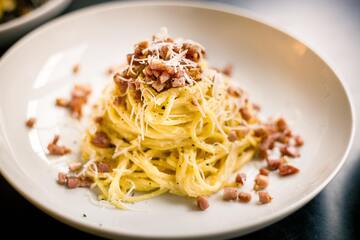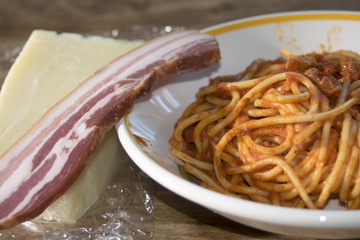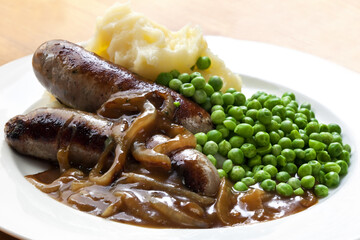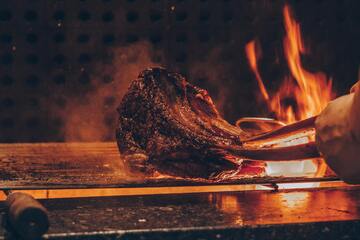How to make homemade pasta: Fresh pasta recipe
Making fresh, homemade pasta is the perfect Italian treat for any night. With this homemade pasta recipe, you're going to be ripe and ready for a delicious evening.
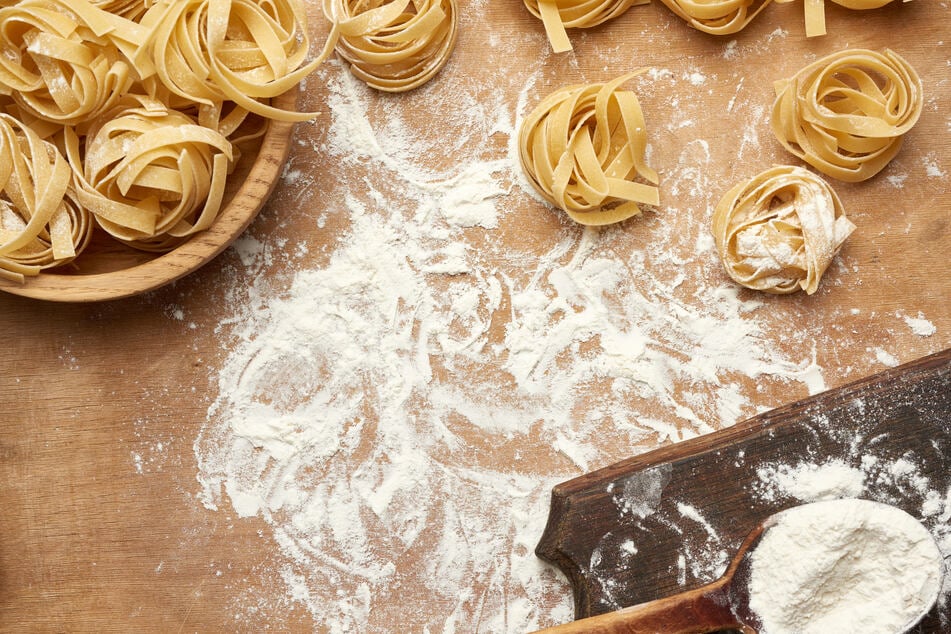
Homemade pasta has its upsides and its downsides, but for many it is the ultimate Italian treat.
With the perfect combination of egg and flour, if you make homemade pasta properly, it will pick up that delicious sauce and deliver you a dish worthy of the time it took.
The TAG24 guide will walk you through the steps to impressing friends and family with that perfect homemade pasta meal!
Here's all you need to know.
Is homemade pasta worth it: Fresh vs store-bought?
While freshly-made pasta will generally be healthier than the store-bought version, your choice mainly depends on what you are trying to cook.
Most dried store-bought pastas are actually completely different products to something you would make at home. The main reason is, of course, the principal ingredient in the pasta dough: flour and eggs (fresh), and semolina (dried or store-bought). There are two principal differences between fresh homemade flour pasta and store-bought dried pasta:
- Homemade pasta: Generally made from flour and eggs, homemade pasta is better for lighter or creamy pasta sauces like carbonara or aglio e olio.
- Dried or store-bought pasta: Generally made from semolina, store-bought pastas are generally dried and are perfect for heavier sauces like a bolognese or perhaps an amatriciana.
Fun fact: Dried or store-bought pastas are better for heavier sauces, as they are often stronger and sturdier than homemade variants. This means that heavier sauces cling to them far easier than homemade pasta, which may become mushy if used in such a way.
There is one other factor to consider when weighing between fresh and store bought pasta: what's the shape that you want?
Homemade pasta can be difficult to shape, especially without a proper pasta machine, and cylindrical pastas like penne, buccatini, or rigatoni, can be especially difficult.
Ultimately, homemade pasta is ideal for lighter or creamy sauces, or for pocket-like pastas such as ravioli. For heavier sauces like bolognese, it's not necessary to make your own. Instead, dried pasta actually clings to the sauce much better for these dishes, and will make the cooking process easier and more streamlined.
How to make easy homemade pasta: Recipe
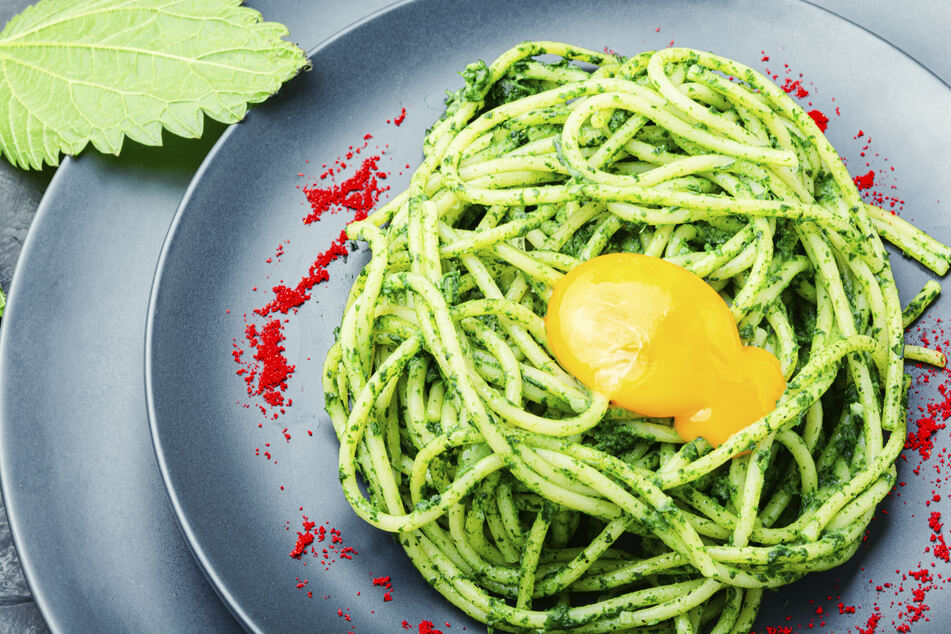
Homemade pasta is actually easier to make than you may have thought. The trick, though, is having the right flour and the right equipment. Without these two factors, your pasta ain't going to be all that good and you may as well have gone store-bought.
What equipment are you going to need?
- A proper pasta-maker
- A rolling pin
- A sharp knife
- A surface that's okay to be scratched (like a chopping board)
- Measuring scales
Now that you've got all the right equipment, it's time to dive into how you can make perfect, fresh homemade pasta!
Homemade pasta recipe | Ingredients
Making pasta is actually an incredibly simple process, ingredients-wise. Let's keep it nice and short, so we can get on with giving you the how-tos!
Homemade pasta ingredients:
- 00 (double zero) flour: 3.5 ounces per egg, plus more for the pasta-making process
- Eggs: one for every 3.5 ounces of flour
- Salt
Important: You should make sure to use proper "00" flour, and not all-purpose flour. Whilst it is possible to make pasta with standard flour, it won't produce as good a result because it is a fair amount coarser, whilst double zero is much finer.
Homemade pasta recipe | Instructions
There are really two steps when making homemade pasta: making the pasta dough and shaping the pasta. These following instructions will help take you through these particular steps.
How to make homemade pasta dough
Step 1: Make a decision on how much pasta you will make, going up in increments of 3.5 ounces. For every 3.5 ounces of flour you want to use, set aside an egg. Cover the surface on which you will be making the dough with a dusting of flour.
Step 2: Make a well out of the weighed-out flour, using your fingers to create a hollow in the middle. Crack your eggs into this "well", and add a couple pinches of salt.
Step 3: Using a fork, quickly whisk the eggs so they are a little bit combined and the yolk is broken. Now use your hands to mix together the egg, flour, and salt. Fully combine the ingredients so that they form a ball that clings together well.
Step 4: It's now time to knead the dough. Scatter another dusting of flour on your surface, and begin to knead the mixture, allowing the ball to get thicker and thicker, but also smoother and more solid. Continue to dust flour until the dough is all ready to go.
Step 5: Once your dough is ready, you need to allow it to rest for at least 30 minutes, preferably around an hour.
How to make homemade pasta shapes
Step 1: Now that you have pasta dough, you'll want to get out your pasta maker. The first step here is, of course, to dust the pasta maker with more flour. This allows your dough to pass easier and smoother through the machine.
Step 2: Separate your dough into a couple of smaller, more manageable chunks, and begin to put it through the machine on its "flattening" setting. You want to continuously feed it through the machine, dusting both the dough and machine with flour in between each pull-through.
Step 3: Once your dough is very nice and thin, it's time to shape it into the type of pasta you're going for:
- If you are making ravioli, use circular cookie cutters to make the tops and bottoms of the pasta.
- If you are making spaghetti, linguine, tagliatelle, or fettuccine, use the designated settings on your pasta maker. Again, dust your pasta dough and machine with flour before use.
- If you are making lasagna, dust your surface and dough with more flour and lie the pasta dough down flat. Now take a rolling pin and make sure it is nice and flat, before using a knife to cut it into lasagna sheets.
There are many different kinds of pasta, and this means that some are harder to make than others. Lasagna is probably the easiest to make, ravioli the hardest.
How to make homemade pasta without a machine
It is not impossible to make homemade pasta without the use of a proper pasta maker. That being said, it is a huge hassle and will make an even bigger mess. What do you need to do? Well, let's take a look.
Homemade pasta without a pasta maker:
Step 1: Make the pasta dough as described above and separate into manageable chunks.
Step 2: Dust your tabletop with flour, as well as your dough. Use a rolling pin to start rolling out the dough.
Step 3: You need to make sure that you continuously dust the table and dough, so that it doesn't stick to your rolling pin or the surface it's on. This can cause rips and tears, which you want to avoid.
Hot tip: You are going to want to keep rolling this bad boy out for a really, really, really long time. It needs to be slightly translucent by the time you are done with. This is one of the many reasons it's better to use a pasta maker.
Step 4: Once it is thin enough, you are going to want to cut it with a knife into the shapes that you want. That means strips of differing width based on your preferences, lasagna sheets, or ravioli circles.
You've been warned: it can take a lifetime to make really good homemade pasta if you don't have a pasta maker!
How to make homemade gluten-free pasta
It is very easy to make gluten-free pasta and really should not be a barrier between someone with gluten intolerance and a great Italian dinner. All you need to do when making gluten-free pasta is replace the flour with an alternative. It's actually not hard at all, and not too expensive.
Gluten-free alternatives to flour that are good for pasta:
- Rice flour
- Potato flour
- Cornflour
You will also want to include a small amount of xanthan gum, as this will make the mixture more soft, doughy, and flexible. Without this ingredient, you will find that the dough is way too dry and crumbly.
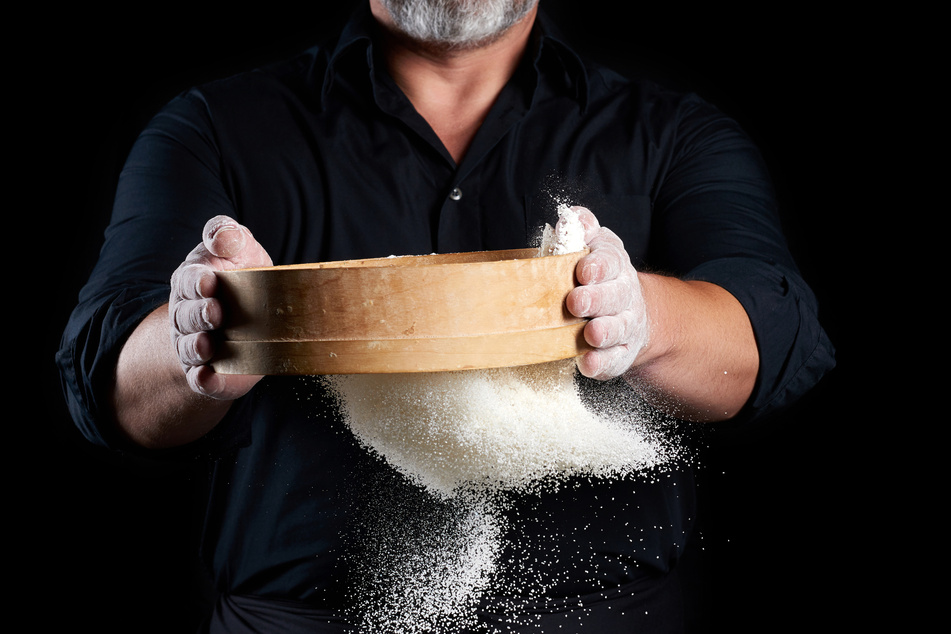
How long does it take to make homemade pasta?
Homemade pasta generally takes about 2 hours to prepare, plus its resting time. The kneading process long and will require a lot of patience to get right.
When making long pasta like spaghetti with a pasta maker, it can be much faster, but things like ravioli can take far longer than 2 hours to properly prepare. That goes especially if you are making a larger quantity or don't have a pasta maker to flatten out the dough.
Homemade pasta is easy, but not always the best choice
Don't get yourself trapped in that "store-bought pasta is bad" mentality. It's actually not true for the most part. Whilst making your own homemade pasta is a delicious and fresh option, it is actually a radically different product to packet pasta, and can be used for different things.
In the end, though, there are few things more delicious, fun, and exciting than making your own fresh homemade pasta. Enjoy it, make an afternoon out of it, and have fun!
Cover photo: IMAGO / Panthermedia


